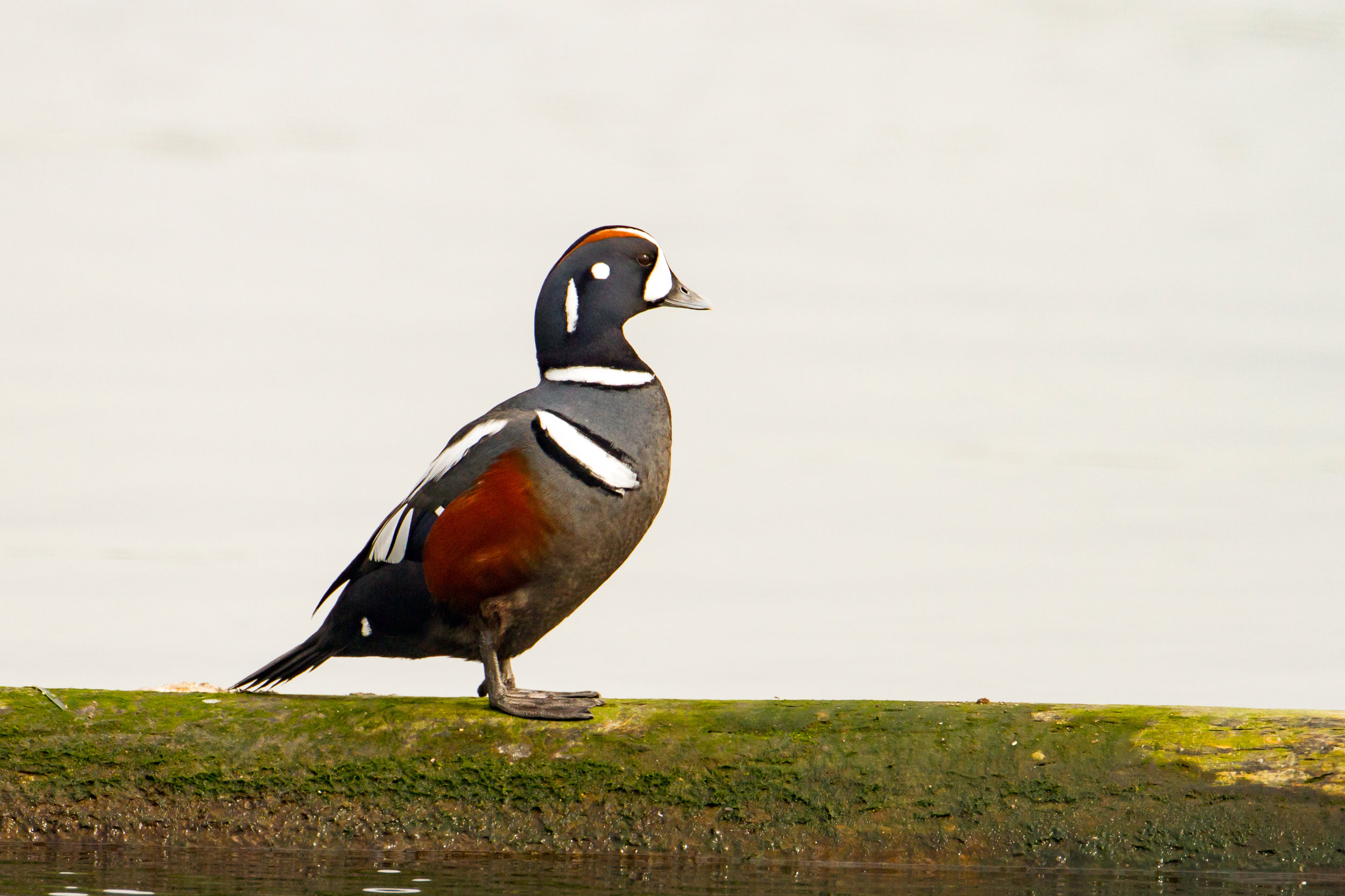Bird of the Month: Harlequin Duck
By Hugh Jennings
PC: Mick Thompson (Harlequin Duck)
Scientific Name: Histrionicus Histrionicus
Length 16-18 in
Weight 1.5 lb
AOU Band code HARL
The Pacific Harlequin is the only duck in the world that divides its time between oceans and mountains. It spends summers in turbulent mountain streams and winters in rocky coastal waters. Weighing only 1 ½ pounds, a harlequin, 16-18” in length, is about half the size of a wild mallard. The four letter code is HARL.
The female is cloaked in subdued browns with three round white spots on the side of the head. But the drake’s splashy colors are among the showiest in the waterfowl world. It is dark and bizarre. A small slaty duck with chestnut sides and odd white patches and spots. In flight, it has the stubby shape of a Goldeneye, but appears uniformly dark.
In May or June, the female lays about six eggs in a nest expertly concealed in streamside vegetation, a hollow tree or logjam. The male now returns to the ocean, precluding any possibility of renesting if the eggs are destroyed. Harlequins routinely navigate rapids, with water spraying and foam flying, that few kayakers would ever enter. The duck even feeds in the seething current, diving to force its way to the stream bottom. With wings held tight against its body and fee pumping rearward like propellers, the bird noses trout-like from rock to rock, searching for aquatic insects to eat. It is likened to swimming in a washing machine. After 20 or 30 seconds, the harlequin bobs to the surface for air, then dives again. The western harlequins appear to have declined over the past 40-50 years. Habitat loss, oil spills and disturbance of nesting ducks by humans are thought to be the main culprits.


